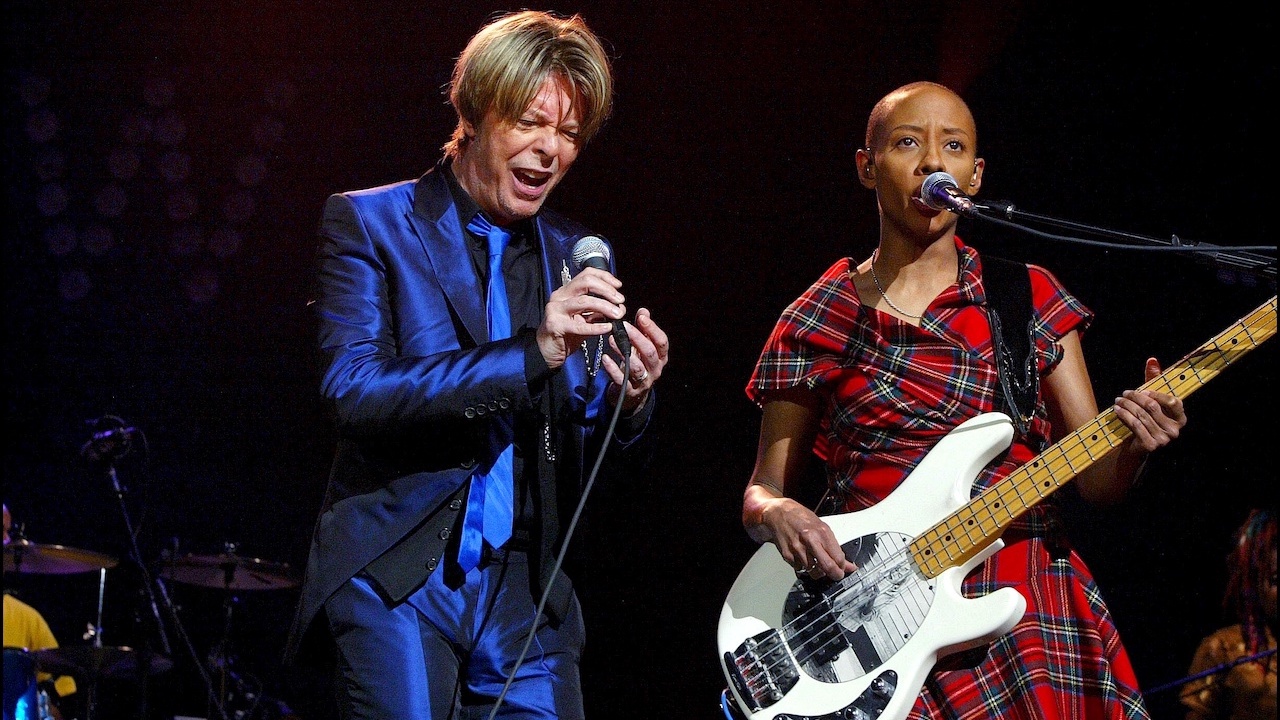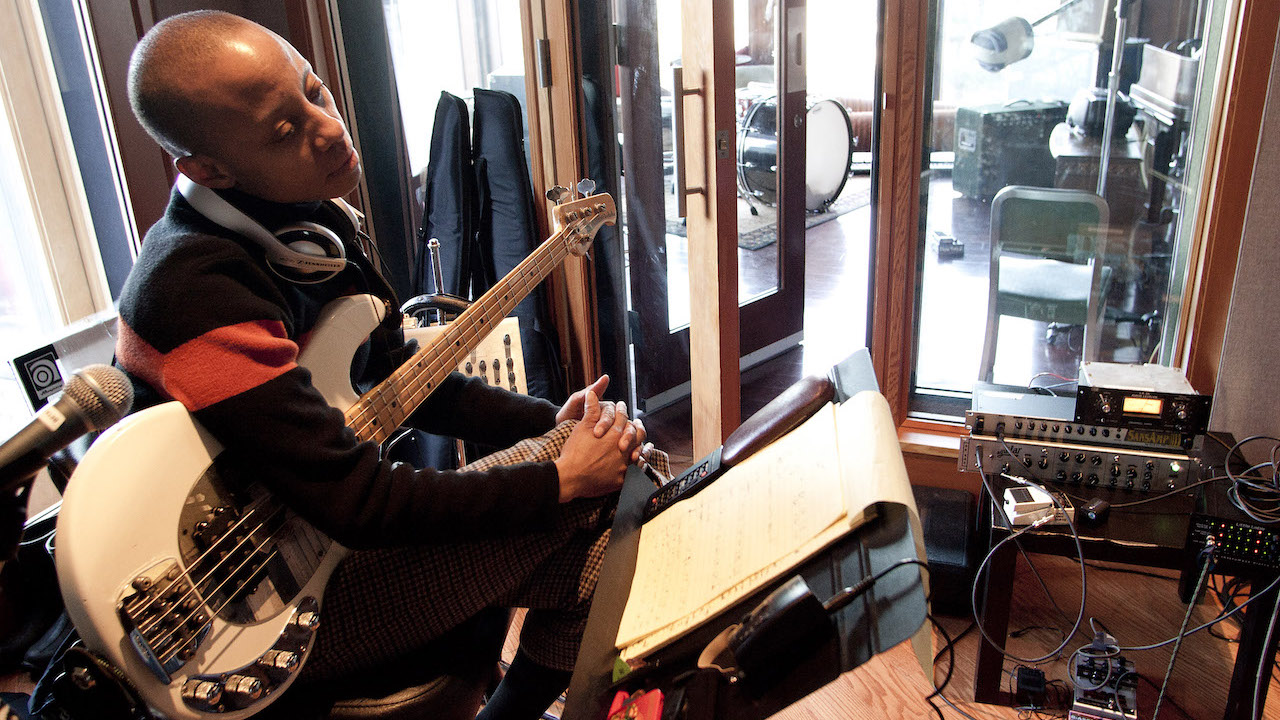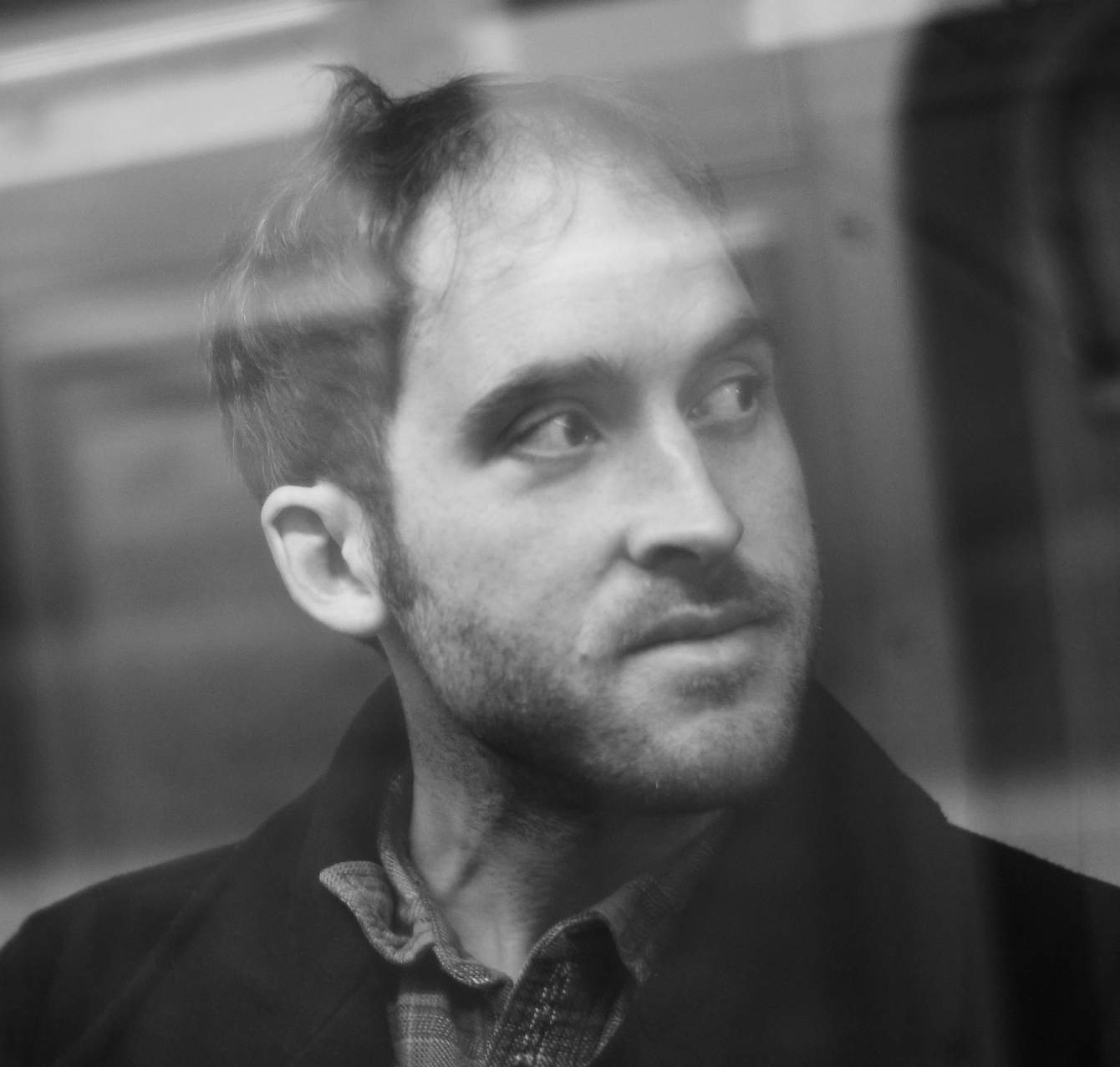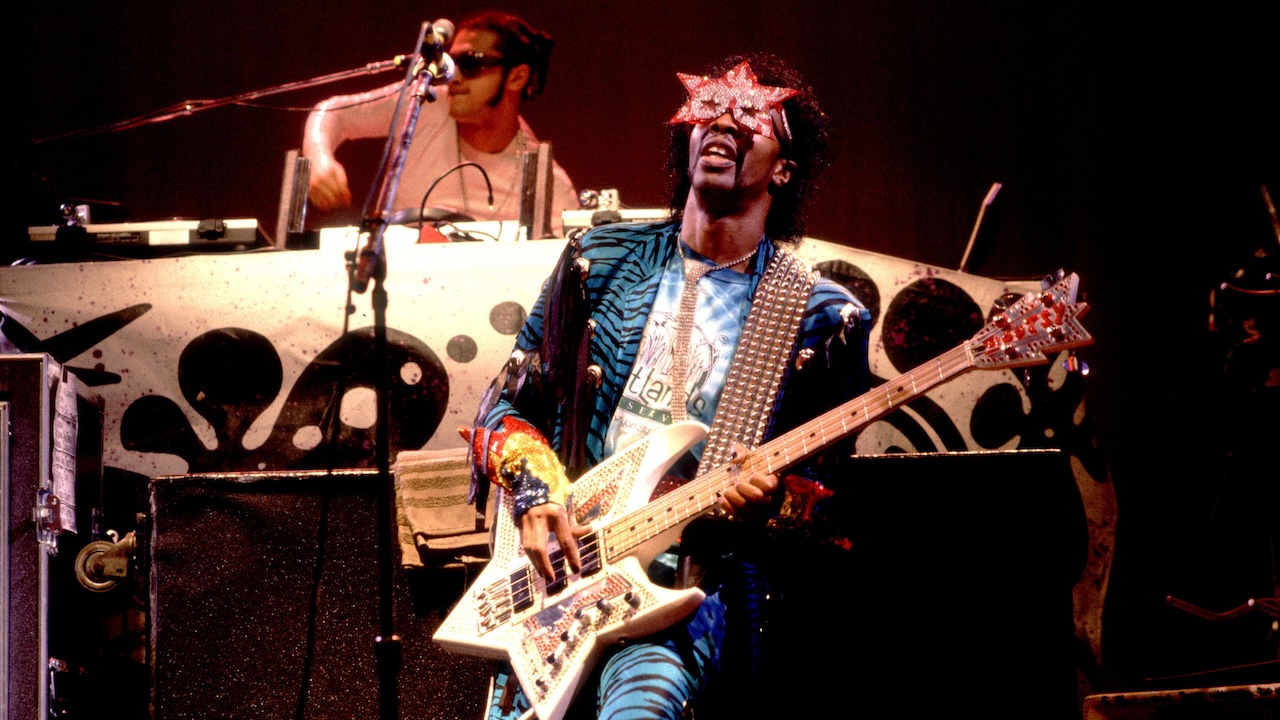"There was something about that picture of Marilyn that resonated with how I feel when I’m trying to get something right on the bass": Why Gail Ann Dorsey named her bass after Marilyn Monroe
The story behind the Bowie bassist’s iconic Music Man StingRay

Throughout her distinguished career as a bass player, which included a twenty year run with David Bowie, Gail Ann Dorsey has relied on a tried-and-tested formula of Ernie Ball Music Man basses and Ampeg amplification. “I got my first StingRay in ’84 or ’85 on the first tour I’d ever done with a band called the Thrashing Doves,” said Dorsey in the May 2010 issue of Bass Guitar Magazine. “With a StingRay bass guitar I can cover just about anything.”
Affectionately known as Marilyn, that same StingRay remains Dorsey’s favourite bass to this day and has accompanied her on tours all over the world. But why 'Marilyn'?
“I was on a train reading some magazine and there was a picture of Marilyn Monroe – not that I’m a big Marilyn Monroe fan or anything, but it was just a great photograph. She was reading a script in her trailer for the last film she ever did before she died, and she looked so perplexed, like she was never going to remember her lines; and there was just something about that picture that resonated with the way I feel when I’m trying to get something right on the bass. I could just imagine what was going through her head.
“So I ripped the picture out of the magazine and took it to a printer’s in London and had them blow it up so I could put it underneath the clear scratchplate that I’d already got for my StingRay. That picture has been there ever since, and for every tour I do I try and have Marilyn with me.”
Following Tony Levin’s fretless work on David Bowie’s Outside record, Dorsey added a fretless bass to her collection for Bowie’s 2003 A Reality Tour. “I used an MTD fretless on The Motel and Slip Away. Initially, I didn’t own a fretless, so I used a TC Electronic chorus pedal and an Ibanez AD99 Analog Delay. The TC is such a good chorus – you don’t lose any bottom at all and it doesn’t thin the sound out.
"Even with the fretless I still use the Ibanez for my own compensation, because I’m not really a fretless player and it gives me a bit more room if I don’t quite make the note. I don’t really like fretless basses to be honest: it’s not my favourite sound, but some players can really pull it off, like Tony Levin – he has a gorgeous fretless sound. Pino I like, and Jaco Pastorius, but that’s about it.”

Despite her long-standing relationship with Ernie Ball, and her wariness of active basses, Dorsey sought out revered bass builder Michael Tobias of MTD basses following an unusual gig in France.
All the latest guitar news, interviews, lessons, reviews, deals and more, direct to your inbox!
“I got a job playing for an amazing event at Le Bercy in Paris called Un, Deux, Trois, Soleil, which featured three Algerian singers – Khaled, Faudel and Rachid Taha – the Cairo Orchestra, a horn section from the UK, some amazing percussionists… Altogether there were 52 people onstage! It was mainly groove based and I used my StingRay on a few of the tunes, but I didn’t really know what I was in for, so I wanted to get a bass that was a little more ‘high tech’ in case I really needed to cut through.”

“I went to a music store in Kingston, New York, and there was an MTD in there – a Grendel, which Michael doesn’t make anymore. It just felt so smooth and easy to play. The neck was much flatter than a StingRay or a Fender bass, and I could actually dial in a nice tone that wasn’t too intimidating. I could crank the treble and the active pots for that modern sound, but I could get a much warmer tone, and Michael lives in Kingston, which was just down the road from me, so it was nice to support a local maker!”
Like her Music Man ties, when it comes to amplification Gail’s affiliation with Ampeg is equally long-standing and plays a key part in her onstage sound. ‘It took me a while to find the right amp, but I think Ampegs are the best bass amps ever made and I don’t play anything else. There are other bass amps that are really good, but they often have too many knobs and can be very bright. My Ampeg can do that, but for the most part it just has a beautiful tube sound.”
A Reality Tour is available to buy on Amazon.

Nick Wells was the Editor of Bass Guitar magazine from 2009 to 2011, before making strides into the world of Artist Relations with Sheldon Dingwall and Dingwall Guitars. He's also the producer of bass-centric documentaries, Walking the Changes and Beneath the Bassline, as well as Production Manager and Artist Liaison for ScottsBassLessons. In his free time, you'll find him jumping around his bedroom to Kool & The Gang while hammering the life out of his P-Bass.
